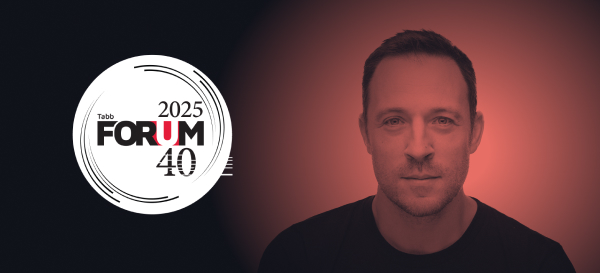Three Pathways for Banks to Enter the Digital Asset Ecosystem
As demand for access to digital assets grows, banks are exploring ways to participate in this evolving ecosystem. From serving crypto companies to enabling crypto trading for customers to building proprietary trading desks, banks have three primary pathways for engagement. Each route brings different risks, opportunities, and technology needs.
Three Pathways for Banks to Enter the Digital Asset Ecosystem
Introduction
As demand for access to digital assets grows, banks are exploring ways to participate in this evolving ecosystem. From serving crypto companies to enabling crypto trading for customers to building proprietary trading desks, banks have three primary pathways for engagement. Each route brings different risks, opportunities, and technology needs.
Pathway 1: Serving Crypto Companies with Traditional Services
Many banks start by providing traditional financial services to crypto-native companies, such as fiat banking, lending, payments, and liquidity. This approach allows banks to support the crypto economy without handling digital assets directly.
For example, some large banks now offer fiat on/off ramps—facilitating USD, EUR, or other fiat currency transactions for crypto exchanges. Others extend prime brokerage services, enabling credit, settlement, and access to liquidity for institutional crypto traders. Banks offering foreign exchange (FX) services can integrate with digital asset networks like Talos’s Provider Network to distribute their liquidity to a broader set of market participants.
In this role, the bank becomes the bridge between the traditional financial system and crypto businesses. It allows them to generate new revenue while managing risk by using existing infrastructure—a natural first step into the digital asset space.

Pathway 2: Offering Digital Asset Services to Bank Customers
This pathway involves creating customer-facing crypto services, enabling retail or institutional clients to buy, sell, and hold digital assets through the bank. This is becoming especially popular among regional and mid-tier banks responding to customer demand for crypto investing.
Some banks have integrated crypto trading into their online platforms, letting users manage crypto alongside their traditional accounts. Others partner with fintechs to offer crypto trading directly from checking accounts, helping retain customers who might otherwise move to external exchanges.
A key component is digital asset custody. Unlike traditional custody, crypto custody involves managing cryptographic keys and secure wallets—functions that require specialized technology. Rather than building this in-house, many banks partner with crypto-native custody providers. By combining custody and trading, banks can offer a seamless customer experience for managing digital assets within a familiar, regulated environment.
Platforms like Talos’s white-label solution can help banks launch these capabilities quickly, offering a branded interface, integrated order routing, and compliance tools—while connecting to third-party liquidity and custody providers. This enables banks to deliver institutional-grade crypto services without building full infrastructure themselves.
Pathway 3: Building Proprietary Digital Asset Trading Operations
The third pathway is the most ambitious: banks trading digital assets on their own behalf by operating proprietary desks, providing over-the-counter (OTC) liquidity, or acting as market makers. This path is usually pursued by large universal or investment banks with capital markets expertise.
These banks may set up crypto trading desks to trade spot assets or derivatives like Bitcoin futures and options. Some operate OTC desks for large, bespoke institutional trades. Though this route involves more complexity and risk, it allows banks to capture spreads and engage directly in crypto markets.
Technology is critical here. Banks need scalable systems for execution, connectivity, and post-trade workflows. Many use platforms like Talos’s OEMS (order and execution management system), which connects to major exchanges and liquidity venues, supports smart order routing, and handles settlement—all with the same rigor applied to traditional trading desks.
Choosing the Right Path
Each pathway presents a different level of operational and regulatory complexity. Smaller banks may gravitate toward enabling client-facing services (Pathway 2), while larger institutions may pursue proprietary trading strategies (Pathway 3).
In all cases, partnering with proven technology providers can help banks move faster and reduce risk. Platforms like Talos offer modular, institutional-grade infrastructure that supports every step of a bank’s digital asset journey—from client interfaces to trading desks.
Notably, Talos was named the “Best Trading and Execution Solution Provider for Digital Assets” at The Digital Banker’s Digital Assets Awards 2024.
By aligning client demand, compliance requirements, and the right technology stack, banks can strategically position themselves in the growing digital asset economy.
Download this article as a PDF.
Reprinted from The Digital Banker Magazine. View the full issue here.
Talos Disclaimer: Talos offers software-as-a-service products that provide connectivity tools for institutional clients. Talos does not provide clients with any pre-negotiated arrangements with liquidity providers or other parties. Clients are required to independently negotiate arrangements with liquidity providers and other parties bilaterally. Talos is not party to any of these arrangements. Services and venues may not be available in all jurisdictions. For information about which services are available in your jurisdiction, please reach out to sales@talos.com.
Latest insights and research
Request a demo
Find out how Talos can simplify the way you interact with the digital asset markets.






